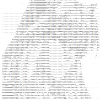Hello,
I've been given a task to create a game engine, I am working on the graphics part of the engine. Now I don't know alot about creating an engine, I know what they do but thats about it.
Here is the scope of my problem.
I need to be able to allow a user to create objects to the screen in real-time, using input from the keyboard or mouse, either by typing command lines or clicking buttons, the user should then be able to place the objects where they desire by either being prompted to enter X,Y,Z cords or simply drag and drop (alot harder, will try to avoid that method).
I'm completely confused on even how to start this, I have fairly good knowledge when it comes to DirectX11 and I know how to create objects in a 3D space. But I have no idea how to do this, so I was wondering if someone could point in the right direction, what I should be looking at, I am constantly being told I should be using design patterns such as Factory Method or Service Locator, but I can't get my head round it. I guess what I am looking for is sample code of a working project which works similar to what I am trying to do, or UMLs which explain it better.
Any help would be appreciated, if my question is too bland please ask so I can help you help me..








